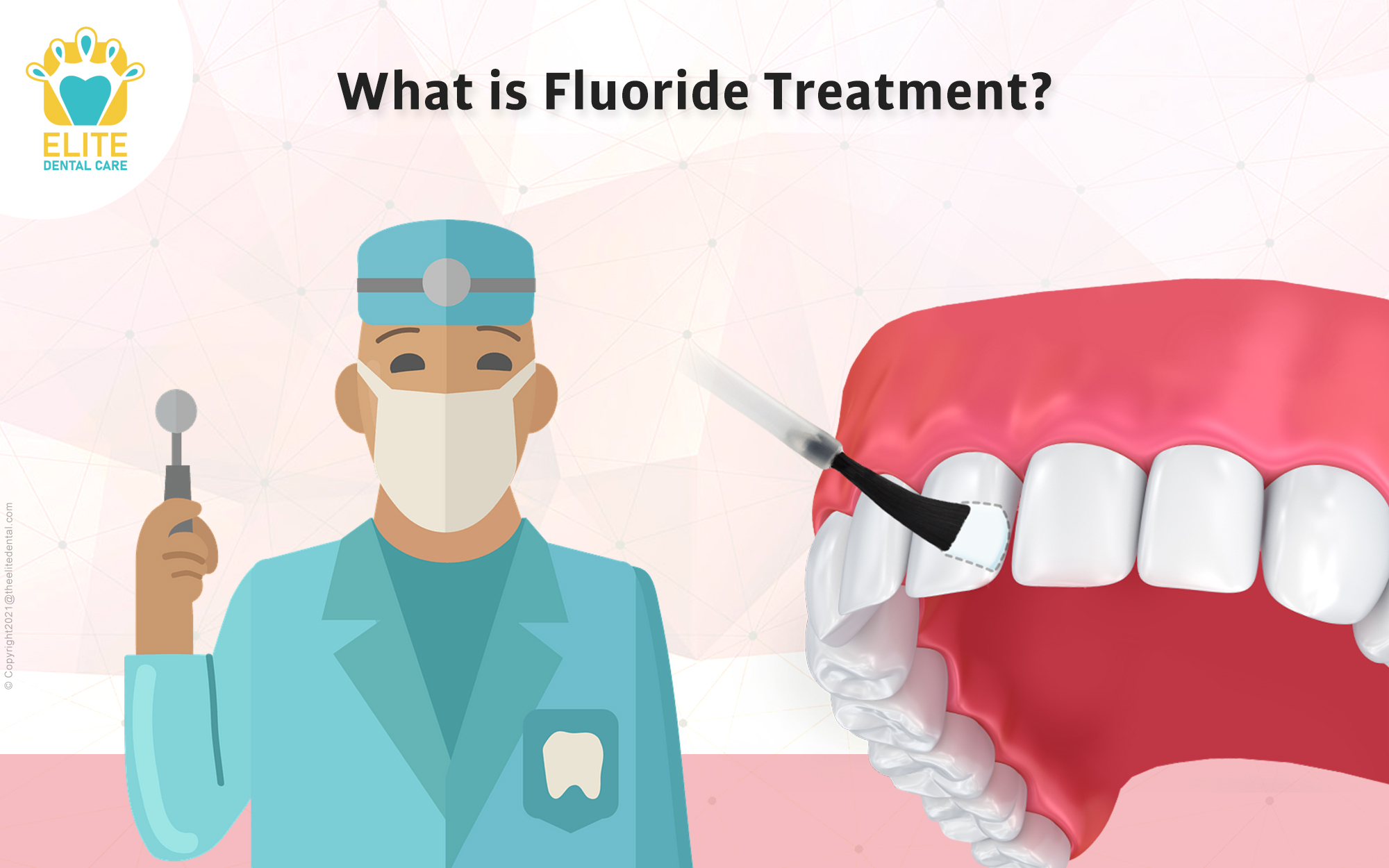
dental caredenturesflossinghygiene tipsUncategorized
edental
5 March 2022
What is Fluoride treatment?
The mineral fluoride appears naturally in numerous foods and waters. Teeth undergo constant remineralization and demineralization through two processes, demineralization and regionalization. Demineralization is the loss of minerals from a tooth’s enamel layer due to acids; these acids occur when plaque, bacteria, and sugars eat the enamel. Foods and water re-mineralise the teeth by depositing fluoride, calcium, and phosphate into the enamel layer. Insufficient remineralization leads to the decay of the enamel layer.
Fluoride can reverse the damage if tooth decay happens in the early stages. It’s difficult for acids to demineralize the teeth in children under the age of 6 because fluoride plays a crucial role in developing permanent teeth. Children and adults can benefit from fluoride since it promotes remineralization and disrupts acid production in those already erupted teeth.
Is fluoride available in any form?
Fluor fluoride is present in toothpaste as well. In addition, fluoridated toothpaste and mouth rinse are direct applications. You can buy over-the-counter mouth rinses in lower concentrations. More substantial concentrations require a doctor’s prescription.
In addition to fluoride toothpaste, fluoride is present in these treatments at a greater level than the amount of food in toothpaste tubes or mouthwash. Enamel paint is painted on the teeth, the foam goes into a mouthguard, and it stays on for one to four minutes on the teeth; it can be painted on or used via a mouthguard.
A prescription from your dentist, pediatrician, or family doctor is also required for tablets and liquid fluoride supplements.
What is the optimal time to take fluoride?
The recommended fluoride intake for infants and children aged six months to sixteen is 150 micrograms per day. Children’s primary and permanent teeth grow during this period, so fluoride is crucial. For adults, fluoride is beneficial. Topical fluoride is equally essential in toothpaste, mouth rinse, and fluoridated treatments to prevent tooth decay.
Furthermore, some conditions can increase the risk of tooth decay, so additional fluoride treatments are beneficial for these people. These conditions include:
- Dry mouth conditions
You can get dry mouth from illnesses like Sjögren’s syndrome, from taking certain medicines (such as antihistamines, anxiety medications, and high blood pressure medications), and from radiotherapy to the head and neck. Saliva plays a critical role in removing food particles and neutralizing acids.
- Gum disease
By increasing the exposure of your teeth and tooth roots to bacteria, periodontitis, also known as gum disease, increases the chances of developing tooth decay. Periodontitis is an early stage of gum disease.
- History of frequent cavities
If you get cavities regularly, adding fluoride to your drinking water could help protect your teeth.
- Crowns and bridges and braces
There is a risk of decay around orthodontic brackets or at the point where crowns meet the underlying tooth structure from such treatments.
Are there risks associated with fluoride use?
When it comes to fluoride, let’s clarify that it is safe and effective when used as directed, but it is sometimes hazardous at high doses, meaning that it varies by weight from person to person. Its primary reason is that parents need to carefully supervise their children’s use of fluoride-containing products and keep fluoride products out to reach children, especially children under the age of six.
Furthermore, excess fluoride can lead to defects in the tooth’s enamel, varying from barely noticeable white specks to cosmetically objectionable brown discoloration. In children younger than six years old, these defects occur when the teeth are forming, a condition known as fluorosis. Natural fluoride, such as that found in well water, is usually associated with fluorosis when it occurs.
It would be best to test a water sample if you use healthy water and are uncertain about the mineral (especially fluoride) content. Generally, you cannot remove fluorosis-induced stains through regular hygiene, but your dentist may be able to lighten or remove these stains using professional-grade abrasives or bleaches.
Despite the low fluoride levels in fluoride-containing products found in most homes, getting to hazardous levels is challenging. If you or your child think they are getting too much fluoride, you might want to consult their dentist, pediatrician, or family doctor.
There are a few things you should remember about fluoride:
- Keep fluoride supplements out of the reach of children.
- You should refrain from using flavored toothpaste since these tend to encourage swallowing.
- You should not use fluoridated toothpaste in any more considerable amount than a pea-sized amount on a child’s toothbrush.
Is Fluoride Necessary for Humans?
According to the experts of the Dental Association, dental fluoride treatments must be provided at the dentist’s office every three, six, or twelve months depending on the oral health of an individual. Your dentist may also prescribe a special fluoride rinse or gel to use at home if you are at a higher risk of cavities.
The following factors can increase your risk of cavities:
- Drinking and using drugs excessively.
- The eating disorder.
- Poor oral health.
- Dentists fail to take care of their teeth properly.
- An unhealthy diet.
- Reduced saliva and dry mouth
- A weak enamel.
The following foods contain fluoride, which you can obtain from your diet. Some examples are drinking water, tea, cooking food in water, having fish with bones, and infant formula.
The Benefits of Fluoride Explained
When bacteria erode the enamel on teeth, fluoride restores the tooth’s surface with materials that bacteria have lost. Additionally, it prevents the growth of harmful oral bacteria so that you can avoid tooth decay.
As a deterrent to decay, fluoride can create a more robust outer coating on your teeth, which can help prevent decay from penetrating deeper into your teeth. Fluoride benefits everyone, from young children to the elderly. Fluoride should be introduced early to children since it helps prevent cavities from developing. Fluoride treatments for prescribed one year were associated with a reduced risk of tooth decay and cavities in children and adolescents compared to those who did not receive fluoride treatments.
Conclusion
The mineral fluoride prevents cavities with its anti-cavity properties. As a result, the dental enamel can regain minerals, preventing harmful bacteria from building up on the tooth. While it is possible to take care of your mouth by maintaining proper oral hygiene, professional fluoride treatments are more beneficial because they will act as an additional barrier between your teeth and potential problems.




